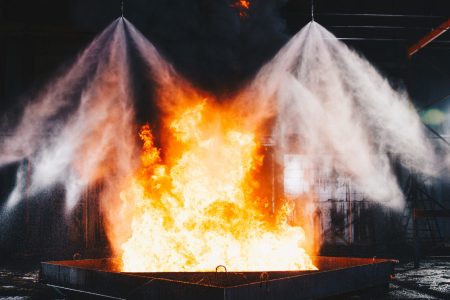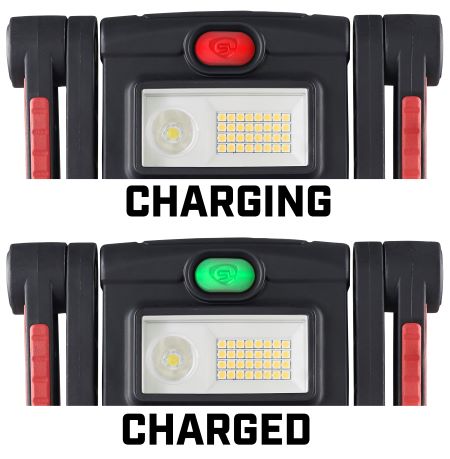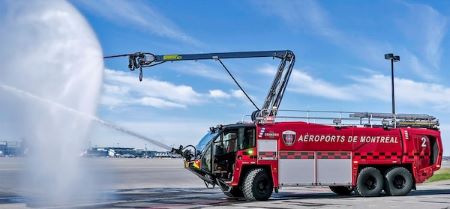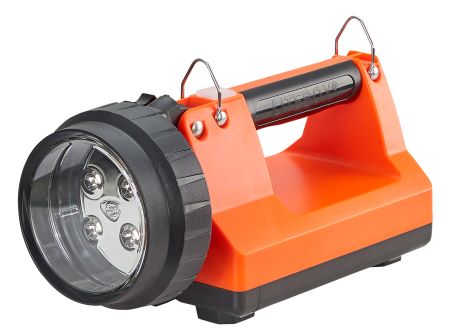
International Fire Buyer talks exclusively to Bettina McDowell, General Manager, IWMA about the benefits of water mist as an environmentally friendly, firefighting technology
What is the core ethos of IWMA and how do you guide and assist members?
IWMA – the International Water Mist Association – is the forum for manufacturers of water mist systems, research institutes, universities, testing laboratories, insurance companies, distributors, installers, fire consultants, architects and many other groups of stakeholders. Our members come from all over the world and from various backgrounds and the association is so to speak the place where they gather to exchange knowledge and to network. I as the general manager co-ordinate. The functions of the committee members vary. There are the members of the board who are responsible for the overall strategy. The members of the scientific council evaluate the submissions for the international water mist conference and the IWMA Young Talent Award, and the marketing group is responsible for marketing activities. The committees are also a pool which plays an important role when it comes to special tasks, like updating chapters on water mist in handbooks like that of NFPA and SFPE, but also establishing tools like the matrix. Apart from that there is a quarterly newsletter – also for non-members – that contains among others news and reports and we also co-operate with our members in as much as that we organise webinars where they can introduce themselves and their projects. I suppose you could say that we promote the technology to pave the way for our members and that we also take the members on board for various activities. Moreover, I would like to mention that our members are very active in standardisation work, some on behalf of IWMA, others on behalf of their countries or organisations. The result here is that together as equals we do a lot to bring the technology forward. So, I suppose that how we guide and assist members is only half the story.
What exactly is the matrix?
The matrix can be found on our webpage. A task group consisting of Markku Vuorisalo (Marioff), Jonathan Carpenter (FM Approvals) and Alex Palle (VID Fire-Kill) – all members of the board of directors – have compiled and processed information that up until last year was scattered. The result is a chart of all current water mist applications and associated fire test protocols that have been published by certification and test agencies. The intent is to highlight that water mist systems are a fire protection option in many applications that have avenues for testing and certifications from third party agencies.
December 2020 saw the publication of the European Water Mist Standard (EN 14972-1:2020). How is this beneficial for the industry?
The publication of this document is something that the industry has been waiting for quite a while. This first part specifies requirements and gives recommendations for the design, installation, inspection and maintenance of all types of fixed land-based water mist systems and is the basis for the DIOM manuals that the manufacturers provide specific to their systems. The letters DIOM stand for design, installation, operation and maintenance.
What I would like to mention is that the standard comprises 17 parts in all of which three others have been published. Four more parts are in effect and will most probably be published in 2021. I think it is needless to say that the more parts are published the more the industry will profit from it. But part one is the most important one and we are delighted that it has been published.
What must CEN members make sure they do before 30th June 2021?
CEN members have until 30th June 2021 to implement EN 14972-1:2020 as a national standard, either by publication of an identical text or by endorsement and withdraw any conflicting national standards. Once they have done that the document has the status of a national standard and conflicting parts within existing national standards will have to be withdrawn. Parts of standards that are not covered can remain. The EN 14972 series are of course voluntary standards so for example NFPA 750 can still be used.
Some counties lag behind, but for example Denmark has already implemented the document as a national standard. IWMA is planning to offer a free webinar on the publication on EN 14972-1:2020 around the end of June, beginning of July during which we plan to have an extensive exchange session so that no question will remain unanswered.
Water mist has been proven as a viable firefighting technology; how does the technology typically work?
Water Mist is defined by droplet size and according to CEN, the European Committee for Standardisation, 90%t of the droplets have to be less than one millimetre in size. When a fire breaks out a water mist system attacks the fire by spraying water through nozzles especially designed for the purpose that can actually create droplets of that size. After a system has been activated, the released droplets evaporate and turn into steam and it is this steam which interacts with the fire. Due to the enormous increase in the volume of the water droplets – as they evaporate – the oxygen is displaced at the source of the fire and the flames are extinguished. During the extinguishing process, the oxygen content around the fire – and only there – drops to below 12 per cent. And it is this low oxygen content that suffocates the fire. This is called the local inerting effect. Further away from the fire the oxygen content is well above 12 per cent which means that there is enough oxygen available for humans. Here, I would like to add that the additional cooling effect prevents re-ignition. At this point I would also like to highlight the diversity of water mist because due to the small droplets we have a suppressant agent that is applicable on a broad range of fire types.
As society shifts towards a more sustainable and environmentally conscious future, how does water mist an eco-friendlier option?
Water mist is indeed an eco-friendly and sustainable technology. For one, only a relatively small amount of water is needed, approximately 85 per cent less than a traditional sprinkler system would need. Due to for example smaller pipes and tanks less material is needed and needs to be shipped. We recommend the use of stainless steel for components that come into contact with water to avoid corrosion, and thus contamination, and to support the longevity of the systems, which in itself is an eco-friendly approach. Another point is the collateral water damage that can be avoided. A challenge is the disposal of the residue after fire incidents in hazardous areas like for example the nuclear industry and in pharmaceutical and electronic manufacturing. When a fire breaks out in such areas this can result in the release of many different toxins and chemicals from the fuel of the fire and / or the gases. The firewater gathers these substances and has to be picked up and disposed of after a fire which is a difficult job that becomes the easier the less water there is.
How would you summarise the benefits of water mist?
A fire triangle comprises three elements: the fuel, the heat and the oxygen. Water mist systems remove the heat as well as the oxygen. They also wet the surroundings, thus affecting also the third side of the triangle although not as much as a sprinkler system. Water mist systems use water and what could be more natural. And then, water mist systems do not use masses of water. The systems are easy to install, retrofit ands can easily be extended. Some systems can be connected to the normal domestic water supply which is interesting for domestic and residential occupancies. Another point is the room-filling effect: due to the size of the droplets water mist is well distributed, fills many nooks and crevices within seconds of activation. Water mist can be carried around with the air flow and is therefore not depending on hitting the fire directly. It is therefore able to control or extinguish even concealed fires. And when it comes to smoke control water mist will efficiently cool the smoke layer preventing the hot gas layer to contribute to further fire spread. Water mist will also cleanout some of the smoke particles.
The Benefits of Water Mist
Water mist does not harm humans. The systems need a relatively small amount of water and space. The components are smaller than those of sprinkler system. The systems are easy and fast to install. They are easy to retrofit and can easily be extended. Some can be connected to the normal domestic water supply.
Water mist reduces two of the components that a fire triangle consists of: the heat and the oxygen. It wets the surroundings – thus affecting also the 3rd side of the triangle – although not as much as traditional sprinklers. Water mist can be carried around with the air flow and is therefore not depending on hitting the fire directly. It is thus able to control or extinguish even concealed fires. Due to the size of the droplets it is well distributed, fills many nooks and crevices within seconds of activation. This is called the room-filling effect.
When it comes to smoke control, water mist will efficiently cool the smoke layer preventing the hot gas layer to contribute to further fire spread. It will also cleanout some of the smoke particles.
When a system is activated, the droplets evaporate and the oxygen content around the fire drops to below 12 %. This low oxygen content suffocates the fire. This is called the local inerting effect. The cooling effect prevent re-ignition.
The technology is proven to international standards and guidelines and is therefore ready to use.
To stay up to date on the latest, trends, innovations, people news and company updates within the global fire market please register to receive our newsletter here.
Media contact
Rebecca Morpeth Spayne,
Editor, International Fire Buyer
Tel: +44 (0) 1622 823 922
Email: editor@firebuyer.com









